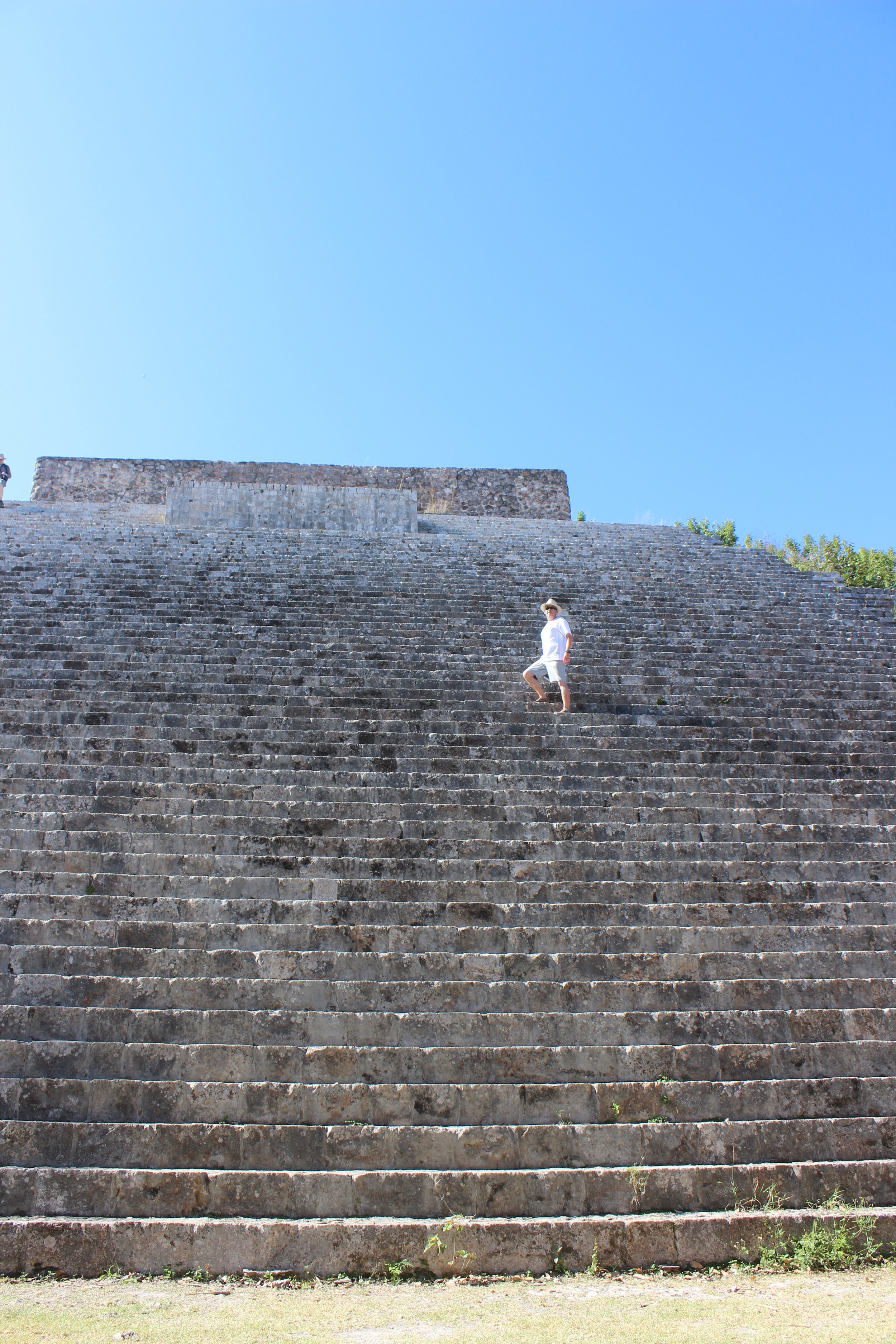Hotel Uxmal Resort Maya - unusual hotel - middle of nowhere - 3 km from Uxmal Mayan Ruins - 82 Rooms - nothing else around - and virtually no guests! Built to cash in on the Tourist trade visiting Uxmal Ruins - but they never came - not in big numbers anyway - all drawn instead to Chichen Itza by its status as one of the 'New Seven Wonders of the World'!
Every room has a prime view of Uxmal Ruins. Somehow David wangled yet another upgrade to the Master Suite with 360 degree views and prime location for the Mayan Ruins' Sound and Light show at 19:00.
We relaxed - swam in the pool - cervezas on the balcony - Amanda had a Temazcal - not as some of you are probably thinking a strong Mexican cocktail! It's a Mayan mud wrap and sauna in a dark hole with mystical light! Smokin!!
And ate Dinner on the Pool Terrace - with hardly any other guests it was weird that our food came out cold! Not just once, or twice, but thrice! Gave up and retired to our balcony for Crisps and chilled SB whilst watching the 19:00 show!!
Desayuno next morning was good though - Huevos Motuleños (see photo) - filling!!
Off to the Mayan Ruins - get there early - beat the rush! Hang on. What rush? We were almost the only people there. Just us and the Iguanas! No coaches, no hawkers, no loud Yanks & Frogs! No worries!!
According to UNESCO:
The ruins of the ceremonial structures at Uxmal represent the pinnacle of late Maya art and architecture in their design, layout and ornamentation.
The 16th century A.D. Maya history known as The Books of Chilam Balam dates the foundation of Uxmal to the later 10th century A.D. Archaeological investigations and radiocarbon dating suggest that the main structures in the complex, including a series of hydraulic works, such as reservoirs for storing rainwater (the chultunoob), were built between the 8th and 10th century A.D. During this period Uxmal grew from a peasant town into a political and administrative centre with up to 20,000 inhabitants. The existence of a town wall reflects a situation of conflict, probably due to the strengthening of other urban centres that eventually contested Uxmal's control of the region; Uxmal was abandoned by its inhabitants after the 10th century A.D. and became no more than a place of pilgrimage until the conquest by the Spanish.
Unlike most other prehispanic towns, Uxmal is not laid out geometrically. Its space is organized in relation to astronomical phenomena, such as the rising and setting of Venus, and adapted to the topography of the site, made up of a series of hills. The main characteristic of Puuc architecture is the division of the facades of buildings into two horizontal elements. The lower of these is plain and composed of carefully dressed blocks broken only by doorways. The upper level, by contrast, is richly decorated with symbolic motifs in a very plastic style; the individual blocks make up a form of mosaic. There are sculptures over the doorways and at the corners of the upper level, almost invariably composed of representations of the head of Chaac, the rain-god.
Some of the most important buildings at the site are the Pyramid of the Soothsayer, the Quadrangle of the Nuns, the Governor's Palace, the House of the Tortoises, the Ball Court, as well as the still not extensively investigated Southern Complex, which includes the Great Pyramid and the Pigeon House.
We had a lovely time wandering around wondering what went on at this impressive Mayan City in past millennia. Fantastic architecture from over a thousand years ago! Our favourites el Casa de las Tortugas y el Templo de los Falos!! Are theories of visitors from outer space founding this place to be believed??














































